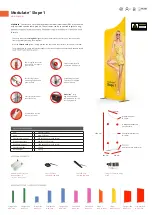
OTHER APPLICATIONS
Passive Mode --- Zero Tolerance
Alcohol in Enclosed Spaces
The PAS Vr. is sensitive enough to detect background levels of alcohol in enclosed spaces
such as vehicles, rooms, lockers, etc. This is useful for detecting drinking by minors in cars or
at social gatherings, without sampling each individual's breath, or in correctional facilities and
treatment centers.
To detect alcohol in any enclosed space, simply run the PAS Vr. to sample still air drawn from
anywhere in the space. Just make sure you don't sample fresh air from an open door or
window.
Under suitable conditions, the PAS Vr. will detect alcohol from open containers in vehicles.
Containers will be easier to detect as you get closer to them if the alcohol content is high, and
if you prevent the vehicle space from getting flushed with fresh air.
Crash Victims
If a crash victim is unconscious, it can be important to know whether he or she has been
drinking. This will often determine the best course of emergency medical treatment.
Even if the victim is conscious, it is important to know whether alcohol might have contributed
to the accident. This will influence the course of any investigation
.
Any crash victim who is breathing can be checked with the PAS Vr. An unconscious subject
might be exhaling from the nose instead of the mouth, but the procedure is the same as with
anyone else. You only need a few seconds to take the breath sample, and you can move
away while the PAS Vr. display is reaching its peak level.
Alcoholic Beverages
With open container laws and the problems of alcohol in our schools, the PAS Vr. is invaluable
for determining whether a beverage contains alcohol. This is easily done by sampling the air
above the container.
Warning
!
The air over an alcoholic drink--even a beer has much more alcohol in it than a drinker's breath.
It is therefore easy to overload the PAS Vr. when checking beverage containers. Overloading should be
avoided whenever possible, because it takes the fuel cell longer to recover, and its performance will gradually
deteriorate.
To check a container for alcohol, angle the inlet port away from the container opening to dilute the sample. If
your first reading is inconclusive, you can always take another one with less dilution.
The PAS Vr. readings should not be taken as an accurate indication of the strength of the drink. However,
with a little experience you should be able to distinguish between beer, wine, and spirits. Take the time to
practice on various drinks and develop an operating style that avoids overloading the instrument.
15
















































